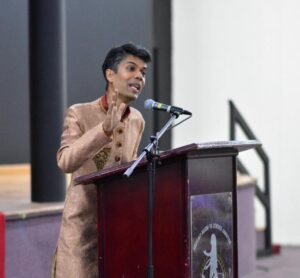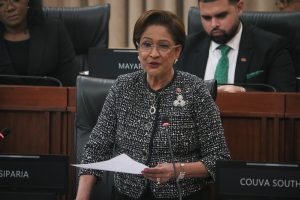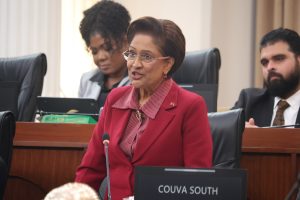‘Other participants in the Hosay included free Indians who had completed their indentured contracts and working-class Africans’

THE Hosay Massacre was a bloody incident that occurred in San Fernando, in South Trinidad, on the afternoon of Thursday, October 30, 1884.
Professor Kelvin Singh described this event as “one of the most traumatic episodes in the history of the Indian sector” of Trinidad population.
In retrospect, this event may well be viewed as perhaps the greatest human tragedy in the history of the working class in Trinidad and Tobago.
Numerous labels have been attached to the event and the incident involving the cold-blooded killing of the participants in a Hosay procession. Who were the participants in this religious celebration in South Trinidad?
The overwhelming majority were simple, working-class Indians from the sugar estates at Jordan Hill, Tarouba, Petit Morne, Union Hall, Bien Venue, Corinth, Phillipine and Palmyra.
Hindus constituted the majority of the participants. According to Singh, “Hindus participated in the construction of the tazias or tadjahs, the processions, the drumming and the ritual mock battles, which occasionally turned out to be serious.” Other participants in the Hosay included free Indians who had completed their indentured contracts and working-class Africans. These Africans were descendants of ex-slaves who once worked on the sugar estates under the traumatic and oppressive slavery era which ended in 1838.
On that fateful day, on October 30, 1884, through the streets of San Fernando, thousands would have witnessed the magnificently decorated tadjahs which were in the shape of a truncated pyramid, built on a bamboo framework and covered with coloured paper. There were three different processions heading for San Fernando, each with approximately 900 to 1,000 persons. There was a heavy police presence at the entrance of the three routes into San Fernando. Firstly, police forces were stationed at the Pointe-a-Pierre and St Joseph road junction. They were expecting a procession from Couva. Newspaper reports indicate that the celebrants were allowed to throw their tadjahs into Tarouba Bay and Guaracara River.
The massacres occurred at the Mon Repos and Cipero entrances into San Fernando between 2.30 pm and 3.30 pm which is close to the present site of the police station.
Labourers from Pointe-a-Pierre, Marabella and Tarouba would have to pass through Vistabella and later converge at Mon Repos. At the Mon Repos junction of Circular and Princes Town roads, police were stationed and despite efforts by Indian shopkeepers and stipendiary magistrates to influence the marchers, the procession continued.
After the stipendiary magistrate read the Riot Act, the police proceeded to fire on the celebrants. The second massacre occurred at the entrance to Cipero Street (near to present day Cross Crossing) where a contingent of police were deployed. Labourers from Penal, Debe and Picton would have converged at this site. After the reading of the Riot Act the police were given instructions to fire at the crowd of participants.
After the massacre, Sir Henry Norman was appointed by Britain to investigate the causes for the uprising. The findings are known as The Royal Commissioner’s Report of 1885, also referred to as the Norman Commission. In providing evidence to the Norman Commission, Captain Arthur Baker, Inspector Commandant of Police, indicated that this was a well-planned assault. Baker recounted that he left Port of Spain for San Fernando with 72 armed police and 20 soldiers. Two warships were stationed in San Fernando and ready to lend assistance to the police. Baker claimed persons in the crowd had hacker sticks and were “in a very excited state, rushing forward evidently with the intention of breaking our ranks.”
The gender and age barriers were also transcended. African and Indian women were present in the procession. Women, especially those of the Shia sect were present in the procession and usually surrounded the tadjahs. However, there was not a large contingent of women. This was due to the conservative upbringing of most Hindu and Muslim women who opted to remain in the barracks and avoid this public crowd. The presence of children and youths in the procession was a normal feature. Teenaged sons, brothers and nephews often accompanied the older men.
In retrospect, 1884 provided a golden opportunity for the colonial ruling class to sabotage and undermine what they interpreted as a growing racial and religious/cultural solidarity among the colony’s working people.
Any form of solidarity among the working class at that time, created fear among colonial government officials in Trinidad and Tobago, and among estate owners. The elites were accustomed to maintaining power by their ‘divide and rule’ strategies.
Dr Jereome Teelucksingh is
![]()













